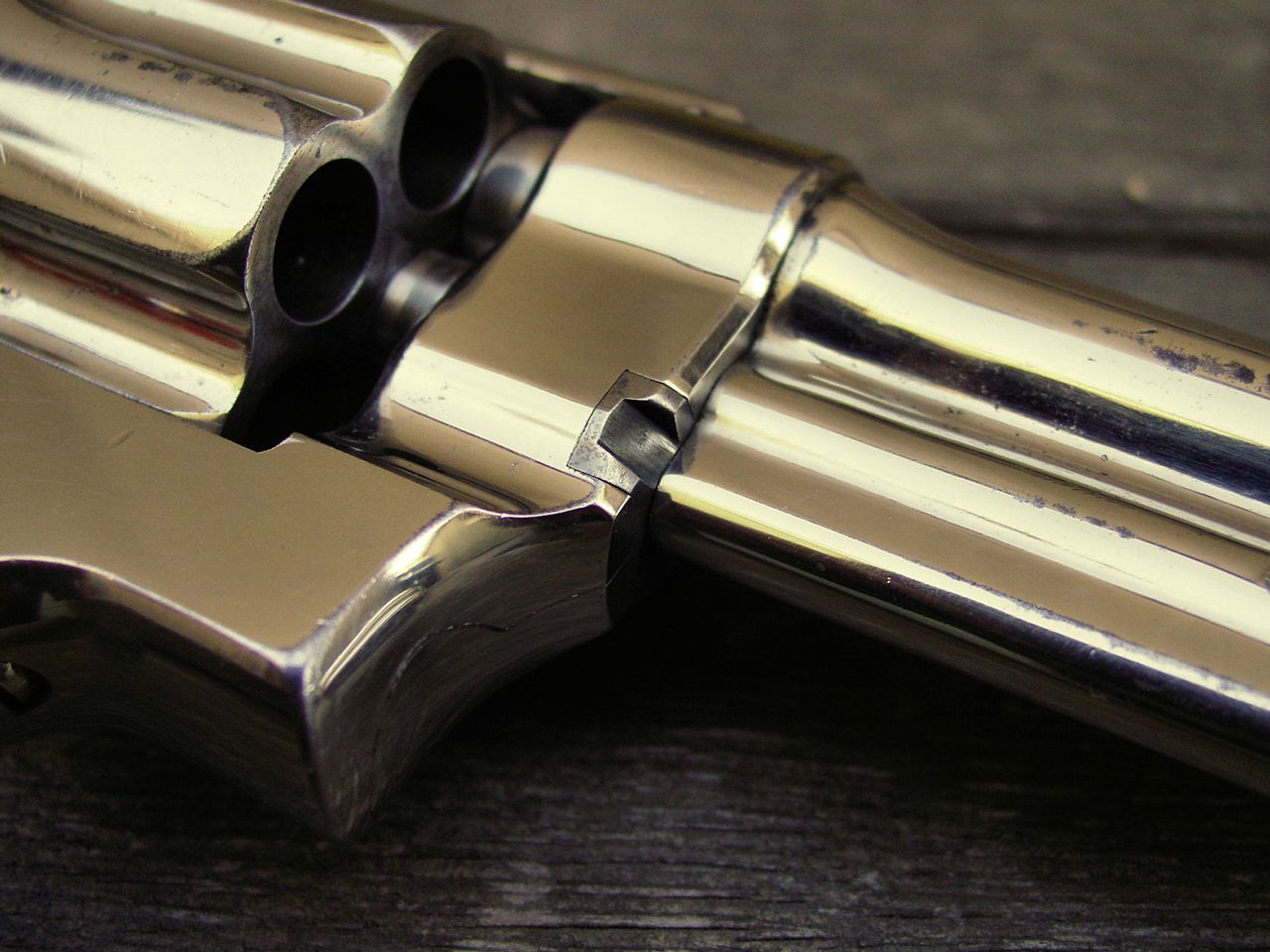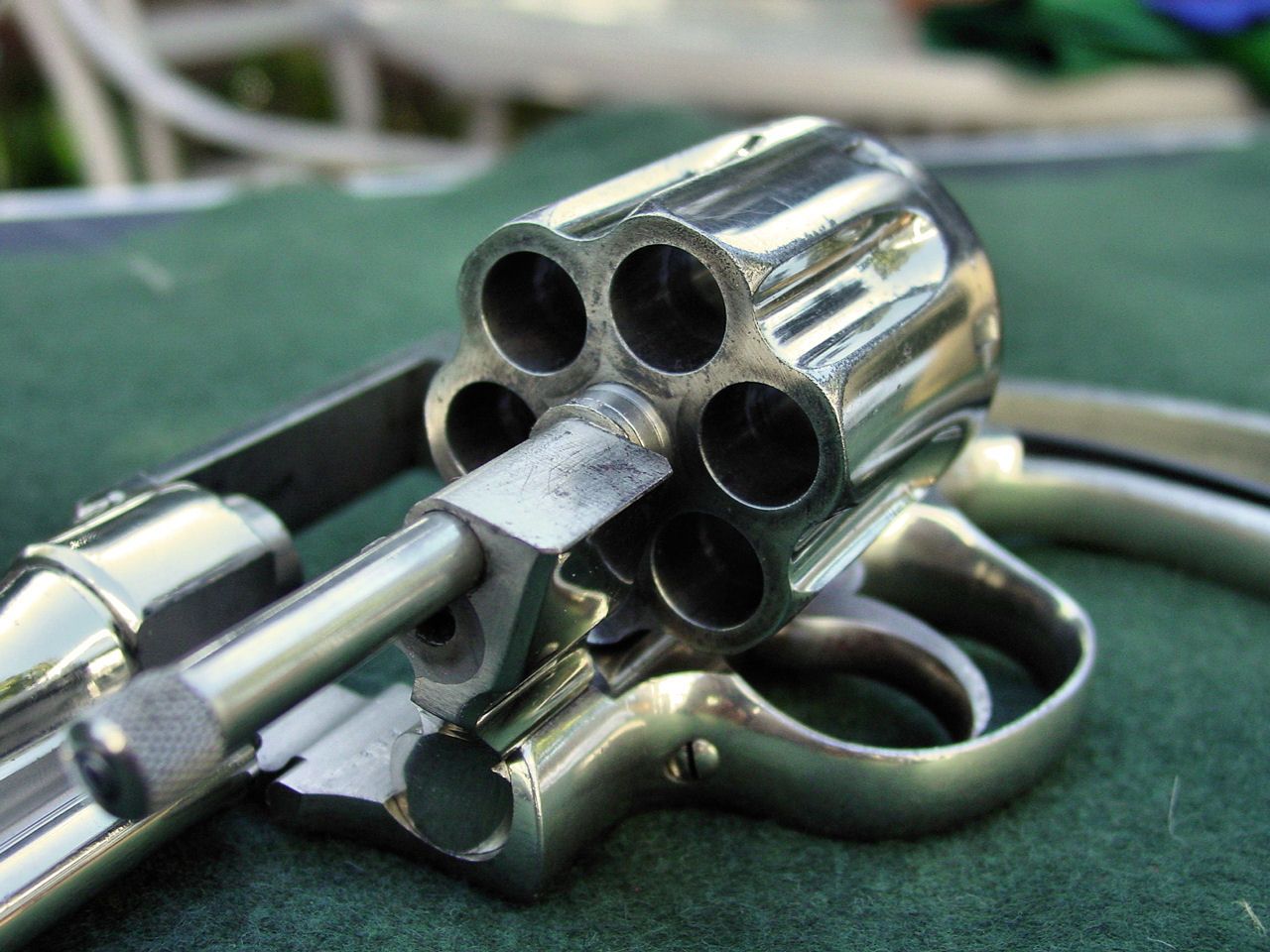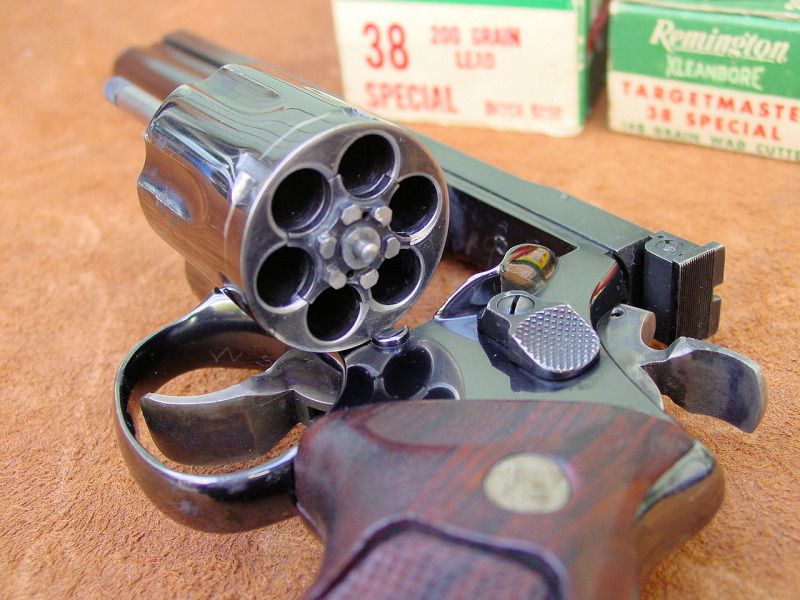What you are looking at in the pic of the cylinder of the Lawman is a chamfer on the front of the cylinder.
Below is a pic of a bevel on the front of a New Century (Triple Lock).


Note the difference between the Lawman and the Triple Lock.
A chamfer can be either slight that just breaks the edge or deep. A chamfer can be either in the form of a radius or a bevel. On the Lawman it is deep. It was cut on a lathe.
Bevels are usually done on a mill. On the TLock they were cut only on the edge of the cutouts in the cylinder.
None of the above has anything to do with flame cutting or the erosion of the forcing cone.
Here are a couple of discussions on the difference.
https://www.sassnet.com/forums/index.php?/topic/166776-the-black-powder-chamfer/
https://rugerforum.net/gunsmithing/71530-black-powder-cylinder-bevel-1st-gen-colt-style.html
tipoc
Below is a pic of a bevel on the front of a New Century (Triple Lock).


Note the difference between the Lawman and the Triple Lock.
A chamfer can be either slight that just breaks the edge or deep. A chamfer can be either in the form of a radius or a bevel. On the Lawman it is deep. It was cut on a lathe.
Bevels are usually done on a mill. On the TLock they were cut only on the edge of the cutouts in the cylinder.
None of the above has anything to do with flame cutting or the erosion of the forcing cone.
Here are a couple of discussions on the difference.
https://www.sassnet.com/forums/index.php?/topic/166776-the-black-powder-chamfer/
https://rugerforum.net/gunsmithing/71530-black-powder-cylinder-bevel-1st-gen-colt-style.html
tipoc

